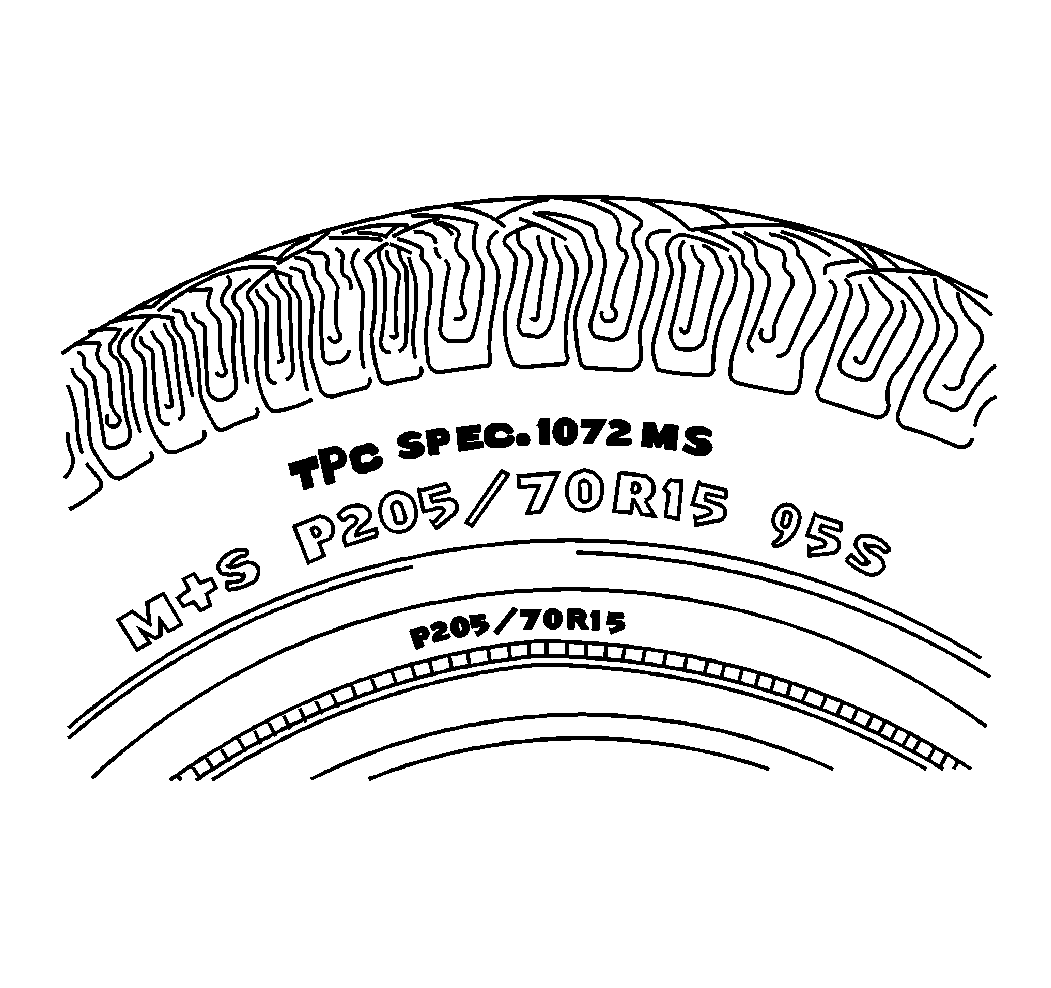Tire Description Procedure

A Tire Performance Criteria (TPC) specification number is molded in the sidewall near the tire size of all original equipment tires. This specification number assures that the tire meets GM's performance standards for traction, endurance, dimensions, noise, handling, rolling resistance and others. A specific TPC number is assigned to each tire size.
Caution: Do not mix different types of tires on the same vehicle such as radial, bias, and bias-belted tires except in emergencies because vehicle handling may be seriously affected and may result in loss of control and possible serious injury.
When replacing tires, only use tires with the same size, load range, and construction as the original tire. Use tires with the same TPC specification number. Use of any other tire size or construction type may seriously affect the following vehicle characteristics:
| • | Ride |
| • | Handling |
| • | Speedometer/odometer calibration |
| • | Vehicle ground clearance |
| • | Tire clearance to the body and chassis |
This does not apply to the spare tire that is furnished with the vehicle.
Install new tires in pairs on the same axle. If you replace only one tire, pair the new tire with the tire that has the most tread. This action will equalize braking traction.
Although some tires may appear different in tread design, tires built by different manufacturers with identical TPC specification numbers, can be intermixed on the same vehicle.
Tire Description Tire Speed Ratings
Speed Symbol | Maximum Speed (km/h) | Maximum Speed (mph) | ||||||
|---|---|---|---|---|---|---|---|---|
|
Important:
| ||||||||
S | 160 | 112 | ||||||
T | 190 | 118 | ||||||
U | 200 | 124 | ||||||
H | 210 | 130 | ||||||
V | 240 | 149 | ||||||
Z | Over 240 | Over 149 | ||||||
